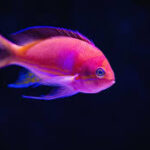The Dragon and Its Connection to Symbols of Prosperity in Chinese Culture

In Chinese culture, the dragon is more than just a mythical creature—it is a powerful symbol of prosperity, good fortune, and wealth. With its long history intertwined with imperial power, the dragon has become a central figure in various aspects of Chinese life, especially in relation to prosperity. From ancient times to the present day, the dragon is not only associated with power but also embodies the idea of abundance and growth. This article explores how the dragon is connected with symbols of prosperity in Chinese culture and the profound significance it holds in bringing wealth, success, and good fortune.
The Dragon: A Symbol of Cosmic Power and Prosperity
In Chinese cosmology, the dragon is often seen as a mystical creature capable of influencing the natural elements and maintaining the balance of the universe. It is closely associated with water, particularly rain, which is essential for agriculture and prosperity in China. The dragon’s control over rain and its ability to bring bountiful harvests is a key reason why it is considered a symbol of wealth and abundance.
Throughout Chinese history, the dragon has also been linked to the imperial family, with emperors often using the dragon as a symbol of their power. Emperors were regarded as “Sons of Heaven,” and the dragon was seen as their celestial protector. This connection with the emperor further elevated the dragon’s association with prosperity, as it was believed that the emperor’s success and the well-being of the nation were directly tied to the dragon’s influence.
The Dragon and the Symbolism of Wealth in Chinese Culture
In Chinese art and architecture, the dragon is commonly depicted alongside other symbols of wealth, fortune, and success. These symbolic pairings enhance the dragon’s representation as a bringer of prosperity. Below are some of the most prominent connections between the dragon and prosperity symbols:
1. The Dragon and the Pearl
One of the most famous images in Chinese art is the depiction of a dragon chasing or holding a pearl. The pearl is often seen as a symbol of wealth, wisdom, and spiritual enlightenment, and its association with the dragon amplifies these meanings. The dragon’s pursuit of the pearl is not just a physical chase but also represents the constant striving for success and the achievement of prosperity.
In many ancient Chinese paintings and carvings, the dragon is shown circling around or holding a glowing pearl, symbolizing its divine power to grant success and fortune. The pearl is often associated with the concept of enlightenment or spiritual treasure, which, when attained, brings about wealth and prosperity in both the material and spiritual realms.
2. The Dragon and the Phoenix
The dragon is also often paired with the phoenix, a mythical bird symbolizing harmony, beauty, and the feminine principle. Together, the dragon and phoenix represent a perfect balance of yin and yang—two opposing but complementary forces in the universe. This balance is considered essential for prosperity and success.
In many traditional Chinese marriages, the dragon and phoenix are used as symbols of a harmonious union. When depicted in art, they are often shown together to signify the bringing together of two prosperous forces, ensuring both fertility and wealth. The dragon, representing the masculine, active energy, works in tandem with the phoenix, which embodies the feminine, passive energy, to bring about a prosperous future.
3. The Dragon and the Bat
Another symbol often paired with the dragon is the bat, which in Chinese culture represents good luck, happiness, and prosperity. The bat is linked to the Chinese word for “fortune” (福, fú), and its association with the dragon emphasizes the creature’s ability to bestow good fortune. The presence of bats in dragon-themed art is a reminder that prosperity can come from both earthly and heavenly sources, with the dragon acting as a conduit for this flow of good fortune.
4. The Dragon and the Lotus
The lotus flower is another symbol associated with prosperity in Chinese culture, often representing purity, growth, and renewal. When depicted alongside the dragon, the lotus signifies the dragon’s role in nurturing life and sustaining prosperity. The lotus blooms in muddy waters, symbolizing how wealth and abundance can emerge from challenging situations—a theme closely linked with the power of the dragon to overcome obstacles and bring prosperity.
The Dragon in Feng Shui: A Catalyst for Prosperity
In Feng Shui, the ancient Chinese practice of arranging one’s environment to promote harmony and balance, the dragon is considered a powerful symbol for attracting wealth and success. The dragon is often placed in homes or businesses as a way to invite good fortune and prosperity into the space.
For example, the Black Dragon is believed to be a protector of wealth, while the Golden Dragon is said to bring immense riches. When positioned correctly in alignment with the five elements of Feng Shui, the dragon is thought to activate positive energy that will lead to financial growth, career advancement, and overall prosperity. The dragon’s presence in Feng Shui is often associated with bringing the right opportunities and opening the doors to success.
The Dragon and the Lunar Calendar: Celebrating Prosperity
The Chinese New Year is perhaps the most well-known festival where the dragon plays a central role in the celebration of prosperity and good fortune. The Dragon Dance is a common feature during these celebrations, where teams of performers move a dragon figure through the streets. This is believed to bring good luck for the coming year and to ensure a prosperous harvest. The vibrant colors and energetic movements of the dance symbolize vitality, success, and a future filled with wealth.
The lunar calendar also connects the dragon to the Year of the Dragon, which occurs every twelve years. People born in the Year of the Dragon are believed to be destined for success and fortune, with the dragon’s attributes of power, confidence, and charisma influencing their lives. This connection between the dragon and the lunar calendar further highlights its association with prosperity in Chinese culture.
The Dragon and the Idea of Prosperity in Modern China
While the dragon’s role as a symbol of prosperity has its roots in ancient Chinese traditions, its influence continues to be felt in modern China. In contemporary society, the dragon remains a potent symbol of wealth, power, and success, often appearing in business logos, advertisements, and even in the architecture of buildings. The dragon is used as a marketing tool to convey the idea of success and growth, linking it to notions of economic prosperity and national pride.
In modern Chinese art and design, the dragon is still depicted as a powerful force, and its association with prosperity is as strong as ever. From luxury goods to national celebrations, the dragon continues to be a symbol of hope and aspiration, reminding the people of China that prosperity is not only achievable but deeply embedded in their cultural identity.
Conclusion
The dragon’s deep connection with prosperity in Chinese culture is both historical and spiritual. From its symbolism in ancient artworks to its role in modern-day society, the dragon continues to represent the pursuit of wealth, abundance, and success. Whether it’s the pursuit of the pearl, the harmony with the phoenix, or its influence in Feng Shui, the dragon stands as a powerful force for prosperity. Its enduring presence in Chinese culture speaks to the timeless desire for prosperity and the belief that, through strength, wisdom, and balance, good fortune will always prevail.


